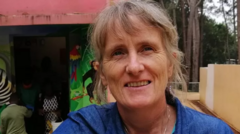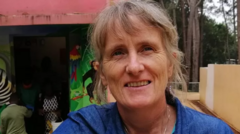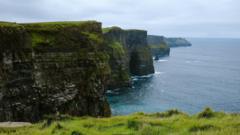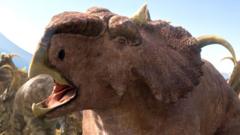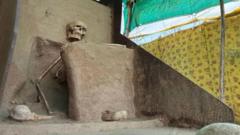Excavators have officially commenced work at the site of the former St. Mary’s Mother and Baby Home in Tuam, Ireland, as part of a landmark excavation aimed at locating the remains of hundreds of children who perished during the institution's operation from 1925 to 1961. Disturbingly, some of these young lives were reportedly disposed of in septic tanks.
For decades, this home, managed by the Bon Secours order, has been associated with the tragic fate of around 800 children, half of whom did not survive past their first birthday. Public outcry has revealed a shocking narrative of maternal struggles, infant mortality, and systemic neglect, frustrating families seeking closure.
Daniel MacSweeney, who is overseeing the excavation under the purview of the independent Office of the Director of Authorized Intervention, Tuam—established by the Irish government in 2022—spoke to reporters about the delicate process involved. Initial efforts involve small motorized diggers operated cautiously alongside forensic specialists trained to identify human remains. Once located, the excavation will transition to a careful manual approach due to the complexity of the conditions expected in the burial sites.
Scientific assessments suggest that many infant remains may be in a mixed state beneath the grounds of the notorious facility, a heartbreaking reality that has catalyzed a continued quest for accountability from both the Irish government and the Catholic Church, who were complicit in the institution's operations. Families and advocates continue to demand answers about the past, as this painful chapter in Irish history unfolds further.
For decades, this home, managed by the Bon Secours order, has been associated with the tragic fate of around 800 children, half of whom did not survive past their first birthday. Public outcry has revealed a shocking narrative of maternal struggles, infant mortality, and systemic neglect, frustrating families seeking closure.
Daniel MacSweeney, who is overseeing the excavation under the purview of the independent Office of the Director of Authorized Intervention, Tuam—established by the Irish government in 2022—spoke to reporters about the delicate process involved. Initial efforts involve small motorized diggers operated cautiously alongside forensic specialists trained to identify human remains. Once located, the excavation will transition to a careful manual approach due to the complexity of the conditions expected in the burial sites.
Scientific assessments suggest that many infant remains may be in a mixed state beneath the grounds of the notorious facility, a heartbreaking reality that has catalyzed a continued quest for accountability from both the Irish government and the Catholic Church, who were complicit in the institution's operations. Families and advocates continue to demand answers about the past, as this painful chapter in Irish history unfolds further.






